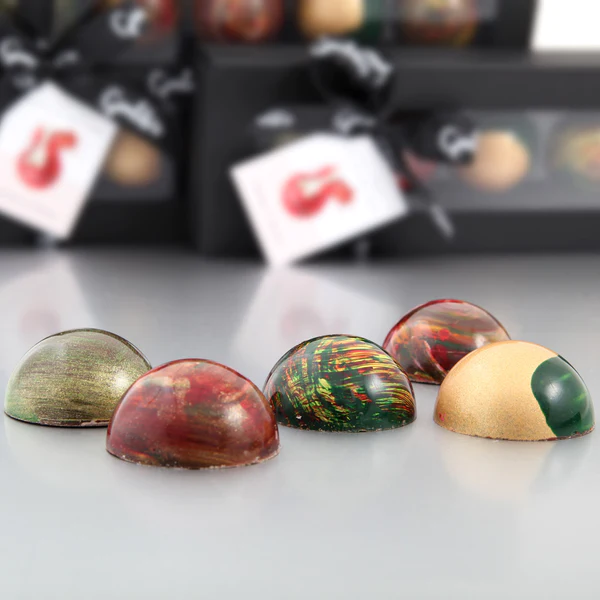If you're a wine enthusiast, you've likely heard of Rioja, the renowned wine region in Spain. It's a place where tradition meets innovation, resulting in some of the most exquisite wines you can find. So, grab a glass (we have a fine selection here), and let's embark on a journey through the vineyards of Rioja!
The Rioja Region
Located in northern Spain, Rioja is famous for its picturesque vineyards, rolling hills, and a climate that's just perfect for growing grapes. The region is divided into three subzones: Rioja Alta, Rioja Alavesa, and Rioja Baja or Rioja Oriental/Eastern Rioja, each offering distinct terroirs that contribute to the diversity of Rioja wines.
Classifying Rioja
Historically, Rioja classification was based on aging:
- Rioja Joven: These wines are young and fresh, spending little to no time in oak barrels. They burst with vibrant fruit flavours and are meant for early consumption.
- Rioja Crianza: Aged for a minimum of one year in oak barrels and another year in the bottle, Crianza wines are well-balanced with a touch of oak influence, making them versatile for various dishes.
- Rioja Reserva: These wines are aged for at least three years, with a minimum of one year in oak barrels. They showcase more complex flavours and aromas, often featuring notes of vanilla and spice.
- Rioja Gran Reserva: Considered the crème de la crème of Rioja, Gran Reserva wines are aged for at least two years in oak and three years in the bottle. They are elegant, with matured fruit flavours, earthy tones, and a silky texture.
While this traditional classification system based on aging has long been revered, a new and exciting trend is emerging in this storied wine region. With the DOCa’s introduction of new geographical wine categories in 2017, wines can now officially be labelled as being from a specific zone, municipality, or even from a registered single vineyard.

Find out more about Shop Rioja
Winemakers are increasingly turning their attention to this geographical approach, which offers a fresh perspective on Rioja's terroir and the unique characteristics of its diverse subzones: Rioja Alta, Rioja Alavesa, and Rioja Oriental (Eastern Rioja or Rioja Baja).
Rioja Alta: Elegance and Finesse
In Rioja Alta, the emphasis is on elegance and finesse. Wines from this subzone are known for their balance, bright acidity, and aromatic complexity. With single vineyard wines, you can expect to taste the subtle nuances of each plot, whether it's the limestone soils imparting minerality or the higher elevation vineyards providing cooler temperatures.
Want a taste? Try Abel Mendoza's Jarrate Tinto for a lively look into the Rioja Alta region.
Rioja Alavesa: Structure and Depth
Rioja Alavesa, the northernmost and coolest area of the region, is characterized by its chalky soils and a slightly warmer climate. This combination results in wines with great structure and depth. Exploring single vineyard offerings from this region can reveal variations in flavour profiles, from red fruit-forward to more robust and tannic.
Want a taste? Try Bodegas Luis Cañas Rioja or Rioja Blanco to experience Rioja Alavesa.
Rioja Oriental or Eastern Rioja (originally Rioja Baja): Richness and Intensity
Historically, wines from Rioja Oriental haven’t been as highly prized as those from Rioja Alta and Rioja Alavesa, but people are now recognising the quality coming from this region. Rioja Oriental, with its Mediterranean climate and iron-rich soils, is known for producing wines with richness and intensity. Single vineyard wines from this area can highlight the sun-soaked flavours of ripe fruit, as well as the spiciness and warmth unique to this region.
Want a taste? Try Bodegas Manzanos Voché Crianza or Voché Bianco and take a dive into Rioja Oriental.
The New Categories
With this new focus on single vineyards and geographic classification, three new categories of Rioja have been developed:
- Vinedo Singular: Focusing on sustainability and heritage, Vinedo Singular vineyards have to meet some very specific standards. These vineyards must be at least 35 years old and a maximum production of 5,000kg per hectare. Grape harvesting must be manual, and the vineyard must be managed in an environmentally friendly manner.
- Vino de Municipio: These wines reflect the geographical areas detailed above. Grapes for these wines must come from a distinct geographical area where they are grown, fermented, and bottled. The wine needs to be named with the name of the municipality, i.e. “vino de…”
- Vino de Zona: These wines can cover a broader geographical scope than the Vino de Municipio category. Grapes for these wines must come from a defined area, the name of which must be stated on the label. 15% of the wine can come from a neighbouring area, as is the case with Vino de Municipio.
A Fresh Look for Rioja
The shift towards single vineyard wines represents an exciting evolution in Rioja's winemaking. It allows for a more detailed exploration of the region's diversity and a deeper connection between the wine and its place of origin. This trend also aligns with the broader global movement in the wine industry towards terroir-driven wines, where the emphasis is on authenticity and uniqueness.
Rioja wine is a treasure trove of flavours and traditions that never fails to delight the senses. The shift towards single vineyard wines within the Rioja region represents a captivating journey into the heart of its terroir. It allows wine enthusiasts to explore the unique character of each subzone, from the elegance of Rioja Alta to the depth of Rioja Alavesa and the richness of Rioja Baja. As Rioja continues to evolve, these single vineyard wines provide a fresh perspective on this timeless wine region.
So, the next time you're in search of the perfect wine, consider Rioja, and let your taste buds embark on a Spanish adventure. Salud!










